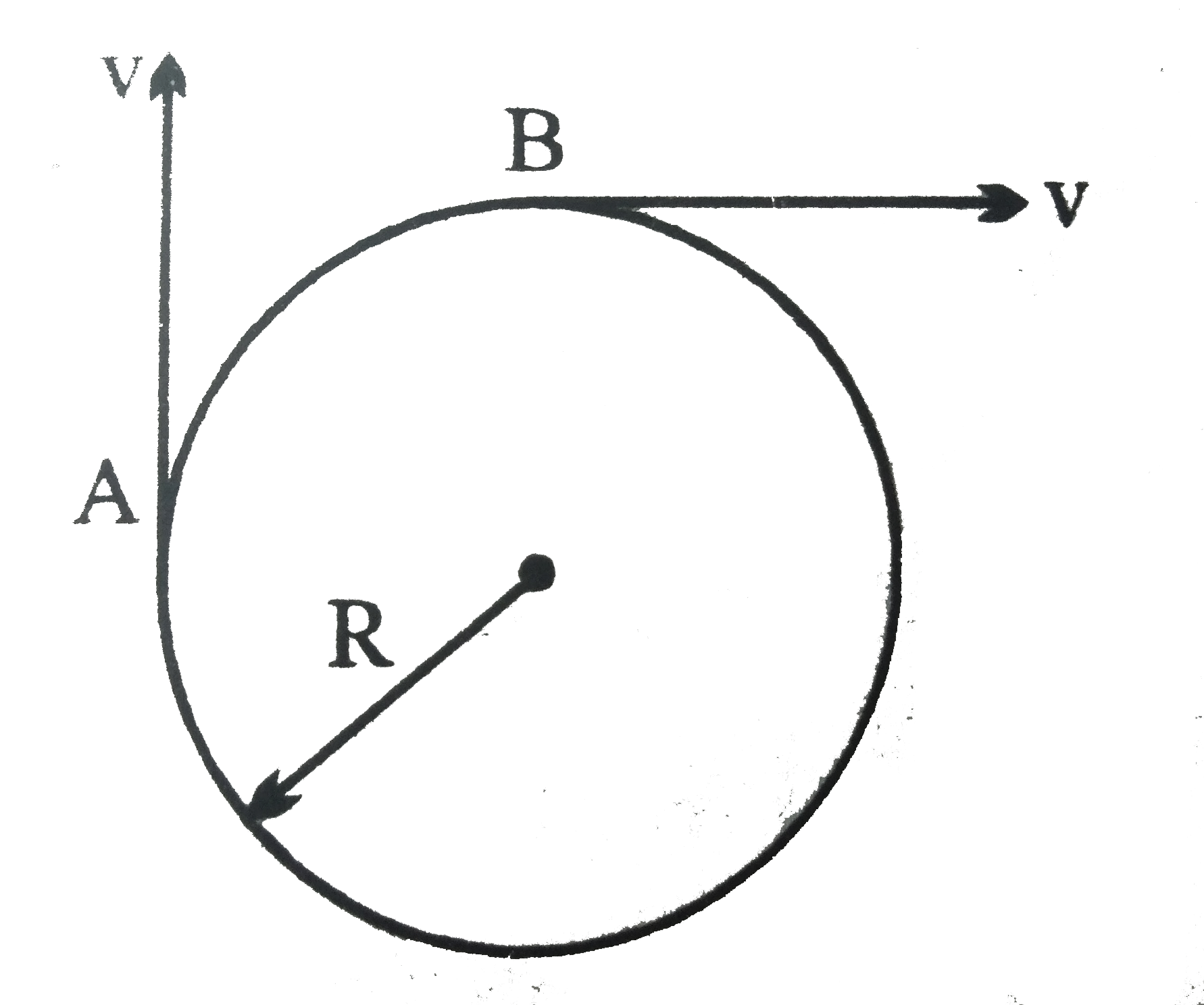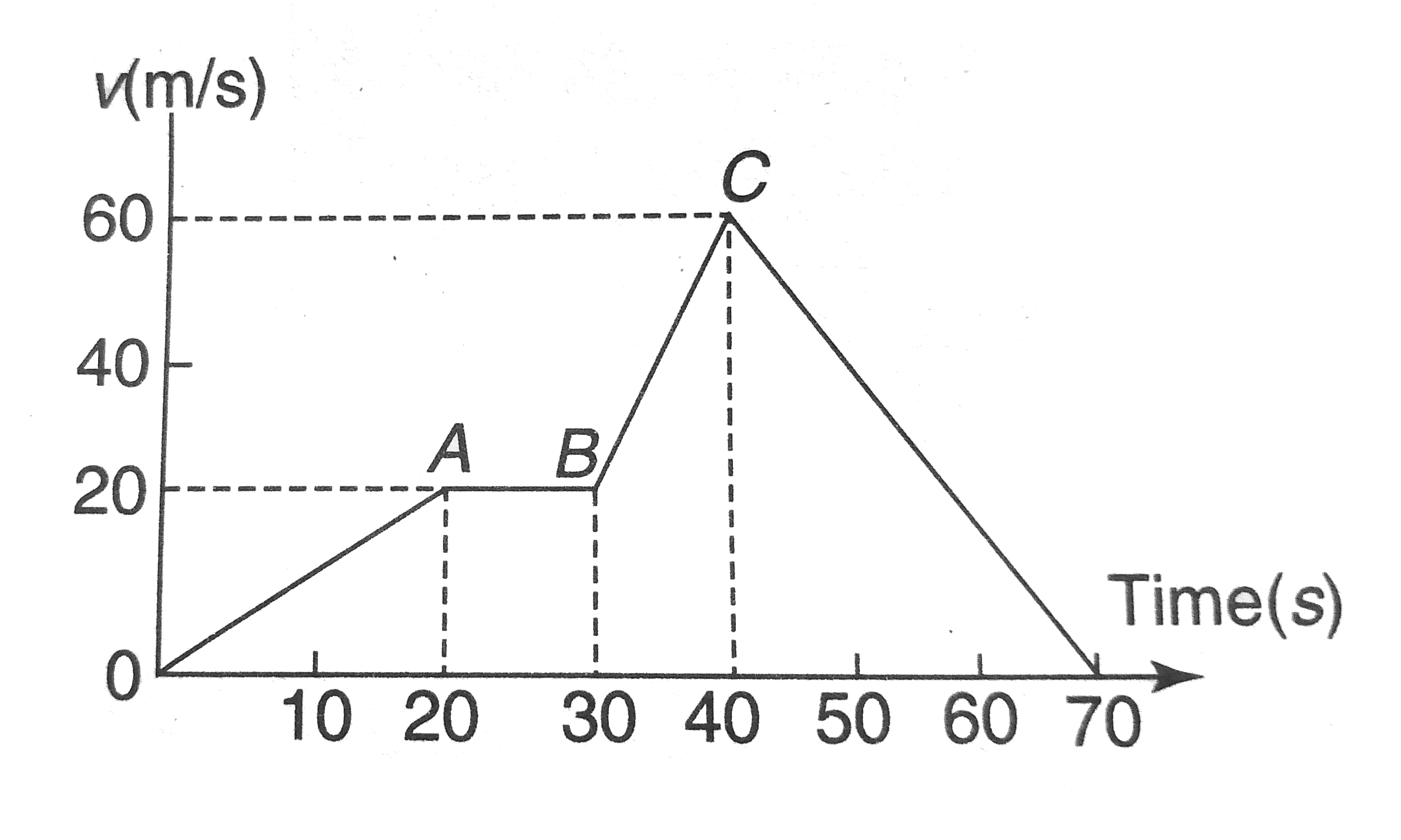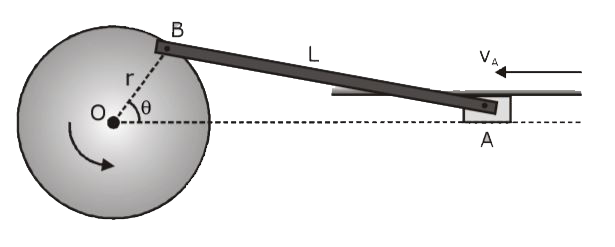Suggest a method to locate IC for the following situations:
(a) Given the velocity of a point on the body and the angular velocity of the body.
(b) Given the lines of action of two nonparallel velocities. (c) Given the magnitude and direction of two parallel velocities.
Text Solution
(a) In this case, if and are known, the IC is located along the line drawn perpendicular to at at B, such that the distance from B to the IC is , Fig. Note that the IC lies on that side of B which causes rotation about the IC, which is consistent with the direction of motion caused by and .
(b) Given the lines of action of two nonparallel velocities. Consider the body in Fig., where the lines of action of the velocities and are known. Draw two lines from points A and B that are perpendicular to and : Extending these perpendiculars to their point of intersection as shown locates the IC at the instant considered. The magnitudes and are generally determined from the geometry of the body and trigonometry. Furthermore, if the magnitude and sense of are known, then the angular velocity of the body is determined from Once computed, can then be used to determine .
(c) When the velocities of points A and B are par allel and have known magnitudes and then the location of the IC is determined by proportional triangles. Examples are shown in Fig. In both cases,

and . If d is a known distance between points A and B, then in Fig, and in Fig. . As a special case, note that if the body is translating, , and the IC would be located at infinity, in which case . This being the case, as expected. =
|
Topper's Solved these Questions
- RIGID BODY DYNAMICS-IIBOOK - RESNICK AND HALLIDAYCHAPTER - RIGID BODY DYNAMICS-IIEXERCISE - CHECKPOINT
4 Videos
- RIGID BODY DYNAMICS-IIBOOK - RESNICK AND HALLIDAYCHAPTER - RIGID BODY DYNAMICS-IIEXERCISE - PROBLEMS
41 Videos
- RIGID BODY DYNAMICS-IIBOOK - RESNICK AND HALLIDAYCHAPTER - RIGID BODY DYNAMICS-IIEXERCISE - PRACTICE QUESTIONS (Integer Type)
2 Videos
- RIGID BODY DYNAMICS - IBOOK - RESNICK AND HALLIDAYCHAPTER - RIGID BODY DYNAMICS - IEXERCISE - PRACTICE QUESTIONS (INTEGER TYPE))
3 Videos
- TEMPERATURE, ZEROTH LAW OF THERMODYNAMICS AND THERMAL EXPANSION BOOK - RESNICK AND HALLIDAYCHAPTER - TEMPERATURE, ZEROTH LAW OF THERMODYNAMICS AND THERMAL EXPANSION EXERCISE - PRACTICE QUETIONS (Integer Type)
4 Videos
Similar Questions
Knowledge Check
Two points of a rigid body are moving as shown. The angular velocity of the body is :
 .Av/2RBv/2C2v/RD2v/3R
.Av/2RBv/2C2v/RD2v/3RIn a laminar flow at a given point the magnitude and direction of the velocity of the fluid
Aboth are constantBmagnitude is only constantCdirection is only constantDboth are not constantThe angular velocity of a rigid body about any point of that body is same :
Aonly in magnitudeBonly in directionCboth in magnitude and direction necessarilyDboth in magnitude and direction about some points but not about all points.
What name is given to the product of mass and velocity of a body ?
View SolutionWhich of the two-linear velocity or the linear acceleration gives the direction of motion of a body?
View SolutionFor a body of given mass graph between velocity of the body and its linear momentum is
View SolutionThe angular velocity of a body rotating about a given axis is doubled. Its kinetic energy
View SolutionThe velocity-time graph of a body is given below. Find the average velocity from t=0 to t=40s.

View Solution

